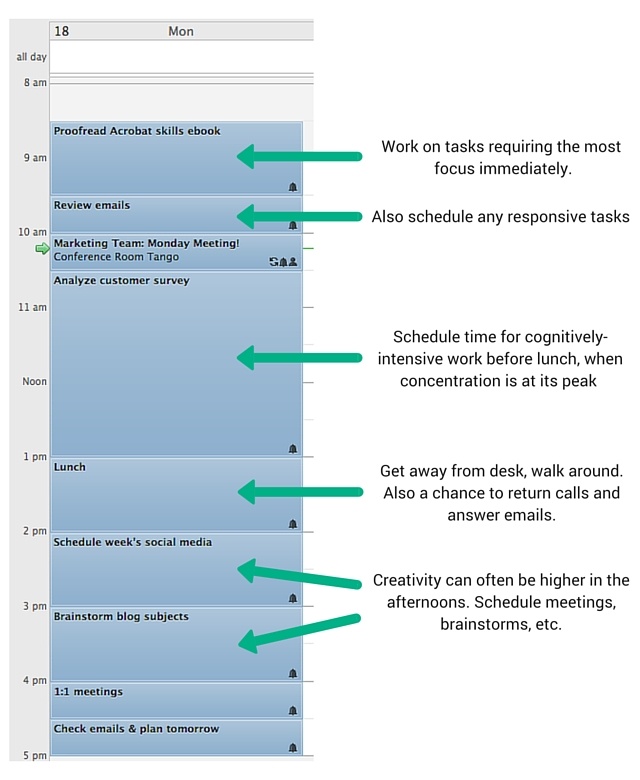If you’re like most legal professionals, a day in your life consists of a never-ending to-do list. And if the items on your list never seem to get done, you’re not alone. In fact, in a survey for LinkedIn, 90% of professionals admitted that they’re regularly unable to complete all of the tasks on their list.
What’s clear is that to-do lists for legal professionals are in urgent need of a makeover.
It’s not for a lack of trying, though. Acres of the web are devoted to making people more productive. You can barely move online for 6 Simple Ways, 20 Awesome Tricks, and One Surprising Secret.
In fact, there’s so much information out there that it’s easy to get carried away and to end up devoting the majority of your time to organizing and planning instead of actually getting stuff done.
Despite the volume of advice, when you look at the tips coming from real experts, there’s an enormous amount of consistency around just four main pieces of advice.
#1 Break projects down into tasks
Then break them down some more. It’s important, says personal productivity guru Gina Trapani, not to confuse to-do’s — single, specific actions — with goals or projects. A to-do is just a single step that can be achieved in a defined period, ideally less than a day.
For example, “implement a new case management system” is a project. “Research a list of five online case management software providers” is a realistic to-do.
Similarly, “pre-trial preparation” for your latest new case is a project. Proofreading and bookmarking draft pleadings are appropriate to-dos.
You might have heard of David Allen’s “Getting Things Done” method, which contains a similar approach he calls “next steps.” It’s the process of breaking a project down into smaller tasks, and then planning which one will be next towards completing the whole thing.
#2 Keep your daily to-do list realistic
There are few better feelings than ticking something off your to-do list. Done! Terminado! Fini! That’s because doing so has an actual effect on your brain via the production of dopamine, the feel-good hormone. It’s important to feel a sense of achievement throughout the day, and that is only possible if your to-do list items are realistic and feasible.
It can be tempting to go too far — take a shower, brush teeth, drive to work. Try to avoid doing that, but do keep the tasks that you place on your daily to-do list limited to items that you are likely to be able to achieve within a typical work day.
There’s even a name for the feeling of mild anxiety and stress people feel when they don’t complete all of the tasks they set for themselves: the Zeigarnik effect. The good news is that you can overcome this feeling by breaking tasks down and setting achievable daily tasks.
#3 Match tasks to the amount of focus they require
Next, when planning your list, try to prioritize tasks by the amount of attention needed. There’s a growing body of research that suggests that paying attention to the body clock, and its effect on energy and ability to concentrate, can help identify the different times of day when we’re likely to perform our best at specific tasks.
For example, according to University of Southern California scientist Steve Kay, when it comes to detailed, high-concentration work most adults perform best in the late morning. The ability to focus typically starts to slide after that, with most people quite easily distracted between noon and 4 pm. Immediately after meals is the worst time to try and focus because during this “rest and digest” period, your energy is focused elsewhere than your brain.
Use this knowledge to prioritize the most cognitively intensive tasks at the beginning of the day.
#4 Connect your list and your calendar
Finally, once you’ve got a prioritized and planned out list, don’t let it just sit there. One of the biggest pitfalls to successful to-list completion is missing opportunities to take action.
Did you really not have time today to proofread that filing? No time to transcribe that deposition? Of course you had time, but were likely distracted by or preoccupied with something else, or perhaps just forgot about it until it was too late in the day.
The final step, once you have an organized, realistic, and prioritized to-do list is to transfer it to your day’s calendar by literally blocking out chunks of time during which you’ll focus on a specific task. Lifehacker, an excellent resource for productivity tips, puts it well:
“Most people don’t schedule their work. They schedule the interruptions that prevent their work from happening. In the case of a business like ours, what clients pay us to make and do happens in the cracks between meetings, or worse, after business hours.”
What does this to-do list in your calendar look like in reality? Well here’s a day from my life (albeit as a marketer, not a lawyer) to give you a gist:

How do you get on with to-do list as a busy legal professional? We’d love to hear what works (and what doesn’t work) for you in the comments below.
P.S. if you enjoyed this post, you might also like our recent post “5 ways to boost your productivity that are backed by science” and one of our most popular posts “Email management tips for attorneys and paralegals”.
Want more productivity tips? Download our free ebook “Essential productivity and time management tips for legal professionals”:







